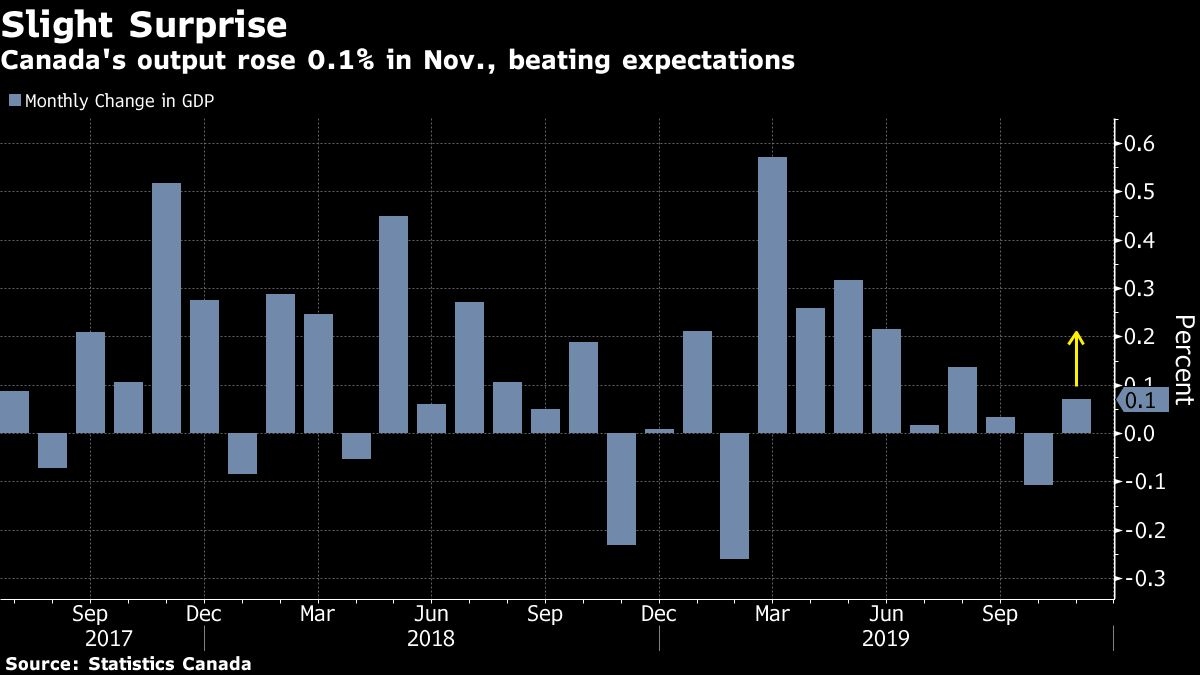Jan 31, 2020
Power-hungry Canada ekes out surprise November GDP growth
, Bloomberg News
Utilities largest upward contributor to Canadian GDP in November
Canada’s economy unexpectedly expanded in November as cold weather drove a sharp increase in power usage, though the pick up won’t be enough to salvage what is likely to be a weak end to the year.
Gross domestic output rose 0.1 per cent in November, beating economist estimates for a flat reading, Statistics Canada reported Friday. That follows a 0.1 per cent contraction in the prior month.
Still, the economy remains on track for a very weak fourth quarter with economists predicting hardly any growth over the period. The slowdown is expected to eventually force the Bank of Canada into an interest rate cut, though Friday’s GDP number may take some pressure off the central bank for a more immediate move.

Utilities rose 2.1 per cent, the largest upward contributor to monthly GDP, as a result of unseasonably cold weather in Central Canada. The construction sector also stood out in the report, up 0.5 per cent on the month, with growth in all subsectors including residential and commercial.
“The above-consensus reading was surprising given the temporary factors which were expected to restrain growth,” Royce Mendes, an economist at Canadian Imperial Bank of Commerce in Toronto, wrote in a note to clients. The result “should limit the downside risk to the Bank of Canada’s Q4 forecast,” he said.
The Bank of Canada estimates annualized growth of just 0.3 per cent in the fourth quarter.
Canada’s currency pared declines after the report, and was trading 0.2 per cent lower at US$1.3234 against its U.S. counterpart at 8:42 a.m. Toronto time.
Key Insights
- November’s expansion in output was a positive surprise after 17 of 18 economists in a Bloomberg survey predicted the economy to shrink or remain unchanged due to pipeline disruptions and an eight-day strike at Canada’s largest railway
- The better-than-expected GDP reading may ease speculation the Bank of Canada will cut interest rates to counter the recent slowdown in the domestic economy, though the report is clouded by transitory events
- Overall, the gains were broad-based with 15 of 20 sectors posting increases, which more than offset notable declines in the energy and transportation sectors
Get More
- A series of transitory factors including a labor strike, pipeline and mine closures contributed to a 1.4 per cent decline in the mining, quarrying and oil and gas category and a 0.9 per cent dip in the transportation and warehousing category
- Retail sales increased 0.5 per cent in November, recouping part of the 1.1 per cent decline in the previous month
- On an annual basis, Canada’s economy grew 1.5 per cent in November, beating estimates for 1.4 per cent
--With assistance from Erik Hertzberg.